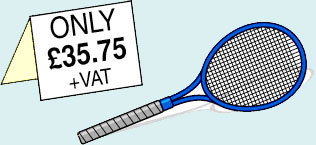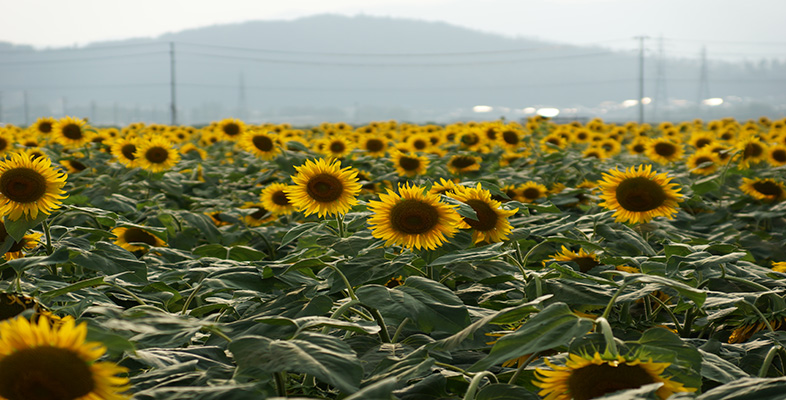3.3.2 Try some yourself
Activity 22
Answer the following questions
(a) How much will this tennis racquet cost if VAT at
 has to be added?
has to be added?

(b) The racquet is put in the sale at 10% discount. What is its sale price, not including VAT?
(c) If customers pay VAT and get the discount, how much do they pay? Does it make any difference to the customer whether the VAT is added first then the discount subtracted, or vice versa? Give a reason for your answer.
Answer
(a)
 of £35.75 = 1.175 × £35.75 = £42.006 25. In practice this would be rounded to the nearest penny, i.e. £42.01 (or £42.00 perhaps).
of £35.75 = 1.175 × £35.75 = £42.006 25. In practice this would be rounded to the nearest penny, i.e. £42.01 (or £42.00 perhaps).(b) A 10% discount would reduce it to 90% of its previous selling price, i.e. 0.9 × £35.75 = £32.175
 £32.18.
£32.18.(c) If VAT is added first you get 0.9 × £42.01 = £37.809
 £37.81. If the discount is taken first you get 1.175 × £32.18 = £37.8115
£37.81. If the discount is taken first you get 1.175 × £32.18 = £37.8115  £37.81. Thus it makes no difference to the final price whether you take the discount or the VAT first. The reason for this is, essentially, that the order in which you do successive multiplication doesn’t matter:
£37.81. Thus it makes no difference to the final price whether you take the discount or the VAT first. The reason for this is, essentially, that the order in which you do successive multiplication doesn’t matter:0.9 × 1.175 × 35.75 = 1.175 × 0.9 × 35.75
Activity 23
A commuter pays £1260 for a season ticket. The train company announces an increase of 7.4% on all its fares. How much will the season ticket cost after the increase?
Answer
If increase on fares is 7.4% then you would need to find
(100% + 7.4%) i.e. 107.4% of £1260.
1.074 × 1260 = 1353.24.
So the season ticket will cost £1353.24 after the increase.
